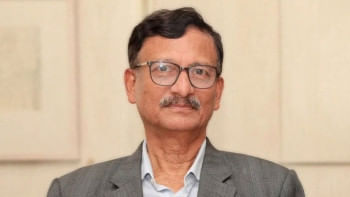Building climate resilient, migrant-friendly cities

A recent report from the World Bank has looked at the potential number of people who will be displaced and become climate migrants due to the adverse impacts of climate change around the world by 2050. The report estimated the number to be around 140 million across Asia and Africa, with 40 million in South Asia.
Of them, a significant portion, around 10 million or more, are likely to be in Bangladesh and these people would most likely be moving inland from the low-lying coastal districts. Most of them are likely to end up in Dhaka.
However climate migrants do not necessarily need to be considered as a problem to be coped with but can also be transformed into a solution with the right kind of planning and investments. I will describe below how that can be done in the context of Bangladesh.
There are three important dimensions of the phenomenon that need to be taken into account and each needs different solutions.
The first dimension is dealing with the climate change impacts that are already being felt in the low-lying coastal districts of the country such as Khulna, Satkhira, Barisal, Patuakhali, Noakhali, Barguna and others where the effects of saline intrusion in surface and groundwater are already being felt. The government, NGOs and the research community are already developing adaptation strategies, such as rain water harvesting for drinking and saline tolerant varieties of rice and other crops, to help the people. The Bangladesh Rice Research Institute (BRRI), for example, has already developed a number of saline tolerant rice varieties which have been widely adopted already all along the coast.
However, we also need to recognise that the problem of sea level rise causing salinity intrusion will be faster than our ability to adapt, and hence, more and more people will eventually have to relocate inland from the coast.
This brings us to the second dimension of the issue: time. The problem of sea level rise and salinity intrusion leading to inevitable migration from coastal Bangladesh will not happen overnight but quite gradually over several decades. This allows us to have a two-track adaptation strategy with the first (short-term) track being helping people in the coastal areas to cope with the salinity issue. The second (long-term) track is to educate and empower the young girls and boys in those areas to enable them not to become farmers and fishers like their parents but to be able to move to towns (and even go abroad) and get better paying jobs there. Once these boys and girls get jobs they can then take their parents to join them and the entire family will be better off than they were before.
In the jargon of climate change science these two tracks are called "adaptation in situ" where we help the people adapt where they are, while the second track is called "transformative adaptation" through which the youth are able to transform their lives altogether.
One point to make about investment in education and skills development is that it will need to focus on quality rather than quantity. Investing in girls is a higher priority than boys since the social returns on such investments are much better.
This brings us to the third dimension of the issue, which is that if nothing is done to divert the migrants, they will almost all end up in Dhaka, which is already the fastest growing mega-city in the world. Dhaka would have great difficulty absorbing another ten million climate migrants.
Hence the solution to Dhaka's growing population problem is to invest in other towns and attract migrants to those towns (as they cannot be forced to do so).
This brings us to the strategy of identifying about a dozen secondary towns away from the coast such as Pabna, Bogra, Jessore, Natore, Mymensingh, Comilla, Faridpur, Sylhet, Noapara, Dinajpur and others which could attract and absorb about a million migrants each.
These towns would be made into "climate resilient and migrant-friendly" towns through investing in both their physical and human infrastructure. The "climate resilient" part is already underway in many of them, with the initial climate vulnerability assessments done. Now climate resilient physical infrastructure is being designed by the government.
However the "migrant-friendly" part still needs to overcome prejudice against migrants by the host population. This requires much more social investment in people's education and behavioural change in order to get them to welcome migrants to these towns.
The most important factor in attracting migrants is the provision of jobs, followed by housing, schooling and healthcare. Hence each of these towns needs to build on their comparative economic advantage to invest in manufacturing or services that will generate employment to attract migrants. As most of these jobs will have to be generated by the private sector, the government will need to work closely with private entrepreneurs to enable them to expand their businesses.
In conclusion, I would like to say that while Bangladesh needs to think about how to cope with the millions of climate migrants that it will inevitably have, we can indeed turn the problem into a solution to show the world that facilitated and planned migration can be a successful, and indeed a transformative, adaptation for millions of climate migrants.
This will however require all sectors of society to contribute in a holistic approach as the government cannot be expected to do it alone.
Saleemul Huq is the Director of International Centre for Climate Change and Development at the Independent University, Bangladesh.
Email: Saleem.icccad@iub.edu.bd











Comments